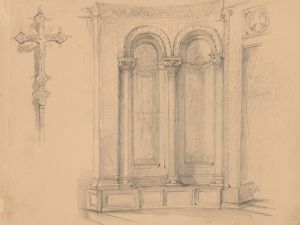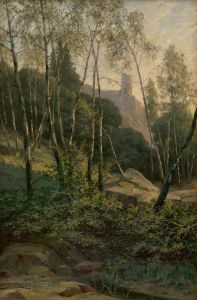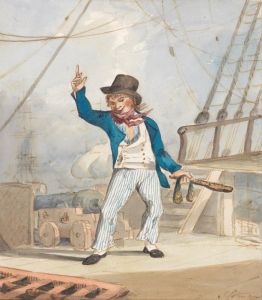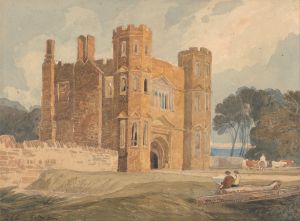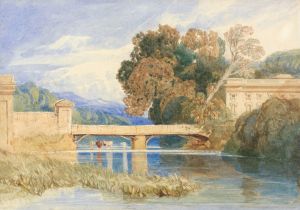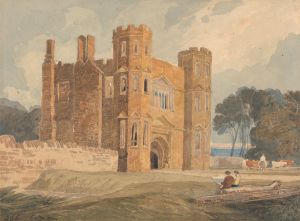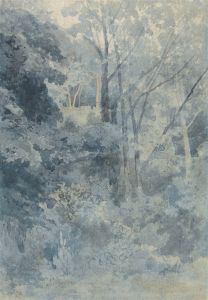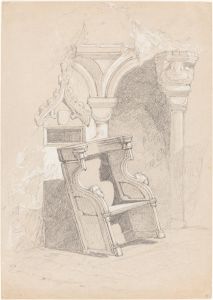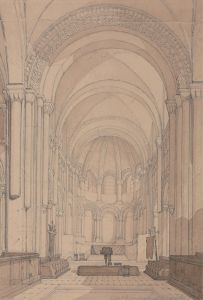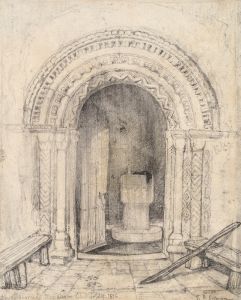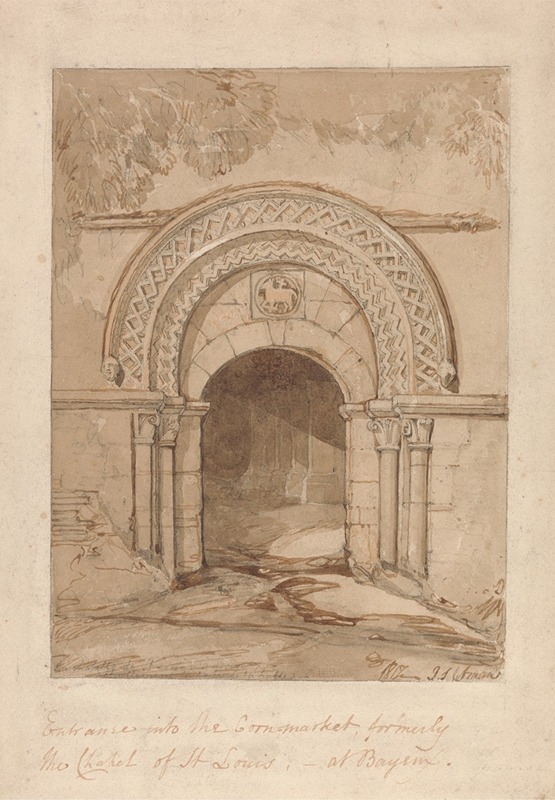
Entrance into the Cornmarket, Formerly the Chapel of St. Louis, at Bayeux
A hand-painted replica of John Sell Cotman’s masterpiece Entrance into the Cornmarket, Formerly the Chapel of St. Louis, at Bayeux, meticulously crafted by professional artists to capture the true essence of the original. Each piece is created with museum-quality canvas and rare mineral pigments, carefully painted by experienced artists with delicate brushstrokes and rich, layered colors to perfectly recreate the texture of the original artwork. Unlike machine-printed reproductions, this hand-painted version brings the painting to life, infused with the artist’s emotions and skill in every stroke. Whether for personal collection or home decoration, it instantly elevates the artistic atmosphere of any space.
"Entrance into the Cornmarket, Formerly the Chapel of St. Louis, at Bayeux" is a watercolor painting by the English artist John Sell Cotman. Cotman, born in 1782, was a prominent figure in the Norwich School of painters, a movement known for its landscape paintings and watercolors. He is celebrated for his architectural subjects and his ability to capture the essence of historical buildings with precision and artistic sensitivity.
This particular painting, created in 1818, depicts the entrance to the Cornmarket in Bayeux, a town in the Normandy region of France. The Cornmarket was originally the Chapel of St. Louis, a historical structure that had been repurposed over time. Cotman's work is notable for its detailed representation of the architectural features of the building, showcasing his skill in rendering the textures and forms of stone and masonry.
Cotman visited Normandy in 1817 and 1818, during which he produced a series of drawings and watercolors of the region's medieval architecture. These works were later published in his "Architectural Antiquities of Normandy" (1822), a collection that significantly contributed to the appreciation and study of Gothic architecture in England. His meticulous approach to documenting these structures provided valuable insights into their design and construction.
In "Entrance into the Cornmarket, Formerly the Chapel of St. Louis, at Bayeux," Cotman employs a delicate palette and precise brushwork to convey the weathered surfaces and intricate details of the building. The painting captures the interplay of light and shadow, highlighting the architectural elements such as the arched doorway, the stone carvings, and the surrounding urban environment. Cotman's ability to balance accuracy with artistic expression is evident in this work, making it a fine example of his contribution to the field of architectural painting.
The historical context of the building adds depth to Cotman's depiction. The Chapel of St. Louis, originally a place of worship, reflects the rich history of Bayeux, a town known for its medieval heritage and the famous Bayeux Tapestry. By the time Cotman painted it, the chapel had been converted into a market space, illustrating the adaptive reuse of historical structures over time.
Cotman's work not only serves as an artistic record but also as a historical document, preserving the appearance of the Cornmarket as it stood in the early 19th century. His paintings from Normandy are valued for their historical accuracy and their contribution to the understanding of medieval architecture.
"Entrance into the Cornmarket, Formerly the Chapel of St. Louis, at Bayeux" remains an important piece within Cotman's oeuvre, exemplifying his mastery of watercolor and his dedication to capturing the architectural heritage of the regions he visited. The painting is held in high regard by art historians and continues to be studied for its artistic and historical significance.





